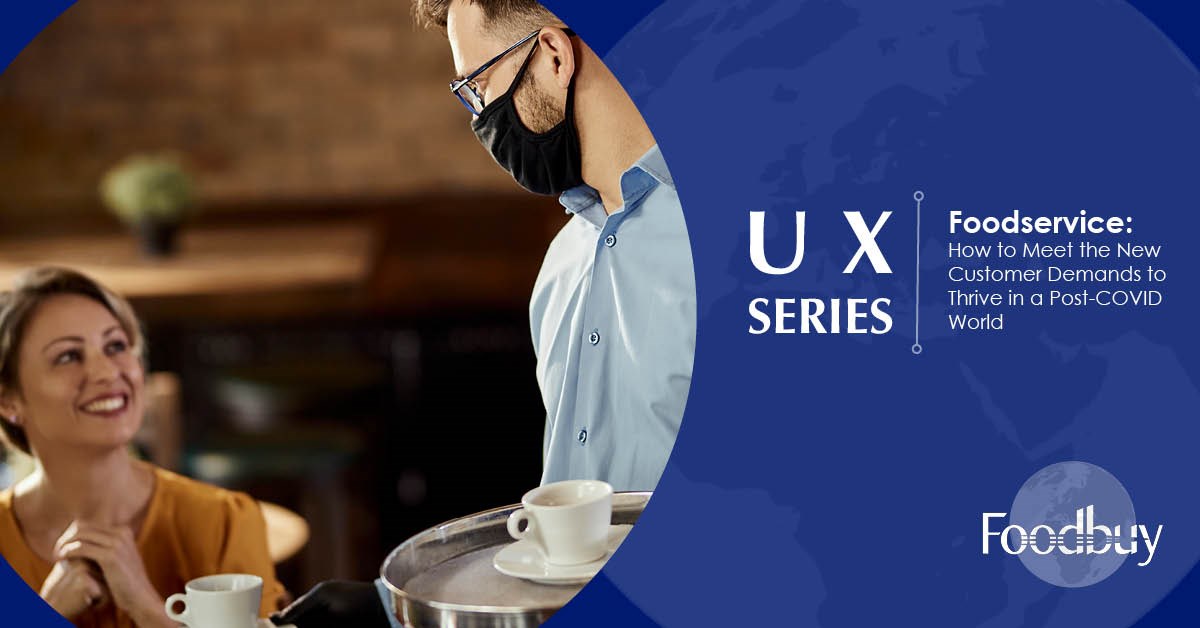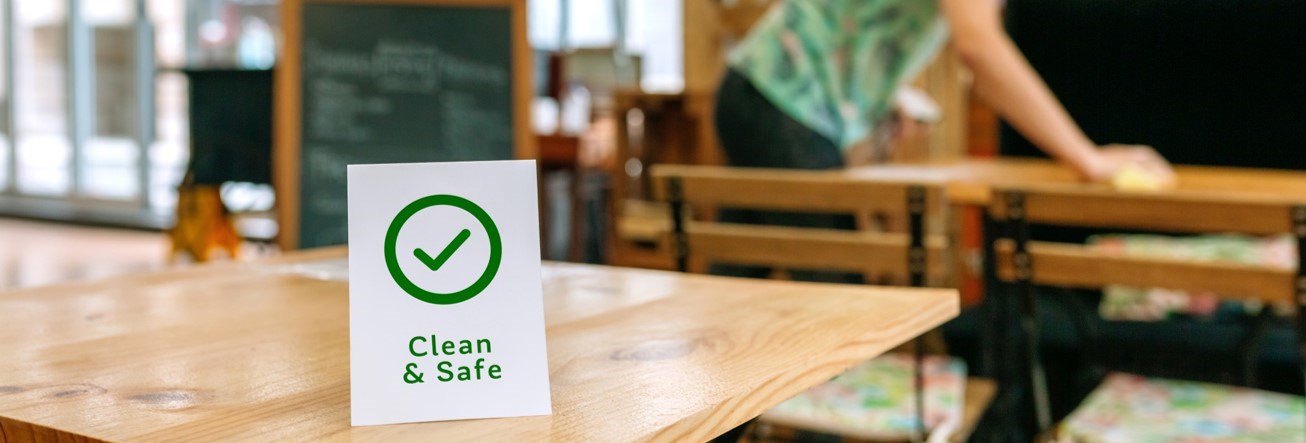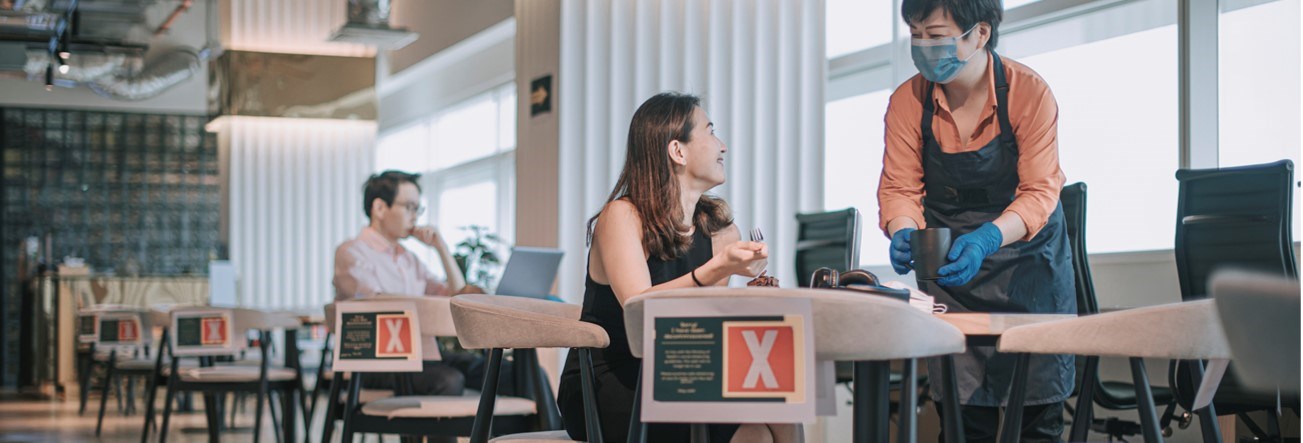


Tuesday, 20 April 2021
Foodbuy is a truly global business, operating in all areas of the globe, from the US and Canada through to the UK, Europe and even Australia. With a global footprint and eyes and ears around the world, we're in a unique position to bring you actionable insights to take back into your business. To do this, we've assembled a team of global research analysts.
Successful operators know that the restaurant business is synonymous with the hospitality business. To survive, you must deliver a superior and consistent experience that leaves patrons feeling satisfied and excited to return. This is, of course, no easy task. It requires getting the more obvious things right: ensuring that the food meets quality expectations, that the menu is appealing, and that the prices are reasonable. But equally important to the overall patron experience are cleanliness, service, the physical environment, and the smoothness of the operation. Operators that pay close attention and take pride in these aspects of the business that go beyond what’s on the menu can often make the difference between success and failure.
Due to COVID, managing the guest experience has gotten complicated, but it’s also more important than ever. According to the McKinsey Pulse Survey of 1,000 adults who visited quick-serve restaurants (QSRs) or casual dining establishments, 80% reported medium to high anxiety levels about returning to dine-in restaurants.[1] It’s fair to say that many of the practices that would have previously been viewed as contributing to a positive experience might now cause patrons some trepidation. Restaurant operators who are able to effectively adapt to the new demands are the ones that are likely to come out ahead over the next several months and years as many of these patron expectations will endure even as restaurants return to full capacity. Below we’ll explore a few ways that you can thrive in the new normal and deliver an experience that gives patrons confidence that their safety and comfort is your top priority.
Chuck Mocco, Country Kitchen International/Café by Country Kitchen said “The customer experience certainly has changed over the past 12 months in the full service segment. Our ability to interact with our guest has been limited on a personal level and therefore we have had to utilize technology to bridge the gap. Technology in the form of QR codes for digital menus, direct order from table, enhanced touchless payment methods and a super charged delivery portal and designated pickup/carryout stations. All play a vital role in ensuring guest and crew safety while providing a memorable dining experience.”

COVID has undoubtedly heightened the average patron’s expectations around cleaning and sanitation. The vast majority of restaurants have done a good job of stepping up their cleaning protocols, but many have not been giving themselves credit by sharing these enhanced practices with their customers. Operators need to be careful how they broadcast these messages as most patrons do not want to be thinking about chemicals and cleaning as they sit down to eat, but signage in other areas of the restaurant where patrons are more likely to be receptive to messages about cleanliness and hygiene, like the toilets, would be appropriate. Operators should also check the chemicals they are using on various surfaces throughout the restaurant to ensure that they are effective for their intended use.
Part of maintaining cleanliness is also reducing unnecessary contact as much as possible. Many restaurants have replaced the soap and paper towel dispensers in their restrooms with touchless solutions. In addition, restaurants with physical menus may want to consider switching to menus that can be accessed through the patron’s mobile device.
Service remains a potent differentiator for any restaurant, but the definition of exceptional service has changed considerably in a post-COVID world. Speed and order accuracy are still critical drivers of customer satisfaction, but equally important is how staff demonstrate their commitment to safety. Are they wearing their masks over both their mouth and nose and maintaining their distance from customers? Are the kitchen staff wearing gloves when preparing food and washing their hands at appropriate intervals? This sends a powerful message to patrons, especially when the kitchen is an open kitchen or partially visible. Consistent training and management oversight are essential to maintaining these service standards.
Service expectations have also changed for takeout. While takeout and delivery used to make up a much smaller portion of the business pre-COVID and were afterthoughts for many operators, both are now very much front and center and are major drivers of revenue. To ensure that the customer has a positive experience, restaurants should consider revamping their takeout process to improve efficiency with separate areas for checkout. Partnering with the right 3rd party delivery service is also important so that customers receive their orders on time and in good condition. Finally, at a time where more food is consumed off-premise, packaging can make a world of difference. When selecting packaging, consider and test the following:

The government has restricted restaurant capacity and mandated certain distances between tables, which has already forced operators to get creative in arranging their space inside the restaurant. However, beyond what is legally required, there are some important and simple visual cues that operators can provide to signal to guests that their safety remains top of mind. There are a variety of social distancing solutions, like labels and signage, that can help direct traffic and maintain safe distances between patrons, and for takeout areas or counter service, there are also transparent barriers available to provide extra protection. Beyond social distancing, operators should also think about ways they can improve access to fresh air. If the weather is nice, this could include opening windows to improve cross-ventilation and placing tables closer to open doors and windows.
Although consumers may not physically see all aspects of your operation, they will almost certainly feel the impact of any inefficiencies caused by decisions made behind the scenes. For example, restaurants that choose to employ expansive menus with inadequate staffing risk frustrating their patrons when the kitchen becomes too stretched to churn out the orders in reasonable time frames. Likewise, operators that are unable to track their demand and reliably schedule their orders with distributors and local suppliers risk increasing the likelihood of stockouts and adding significant cost to their operation. In a post-COVID world, these types of operational blunders are magnified even further. More than ever, patrons are looking for a frictionless dining experience, an opportunity to leave their stresses behind while enjoying a freshly prepared meal. Restaurants that fail this fundamental test will be challenged to get a second chance.
Restaurant operators should take a hard look at their menus and inventory to determine how they can streamline and simplify execution. Are there products that move more slowly than others and take up precious storage space? Are there ways to consolidate purchasing? Sometimes this means removing low performers from the menu, but it can also mean determining if you’re purchasing more unique SKUs than you truly need. Are two different sized chicken breasts really needed to make two different dishes? It may be possible to improve efficiency back-of-house without even touching the menu the customer sees. Moreover, operators should prioritise strong distributor and supplier partnerships. Those with the best relationships, who understand what success looks like for the distributors and suppliers, stand a better chance of optimising their delivery schedules at the lowest landed cost—while limiting stockouts and unwanted substitutions. Again, while none of these principles are new, they do take on a more urgent importance due to heightened consumer expectations and sensitivities.
Patron expectations have rapidly evolved, and while some restaurants will struggle, savvy operators will recognise that these new expectations create a unique opportunity to win new customers and earn their trust. Foodbuy sources many of the products or services mentioned above and consults with many restaurants on their procurement needs. If we can be of any assistance as you seek to adapt your operation, please contact us here.
[1] www.mckinsey.com/~/media/McKinsey/Industries/Retail/Our%20Insights/Eating%20out%20side%20Restaurant%20dining%20in%20the%20next%20normal/Eating-outside-Restaurant-dining-in-the-next-normal.pdf
